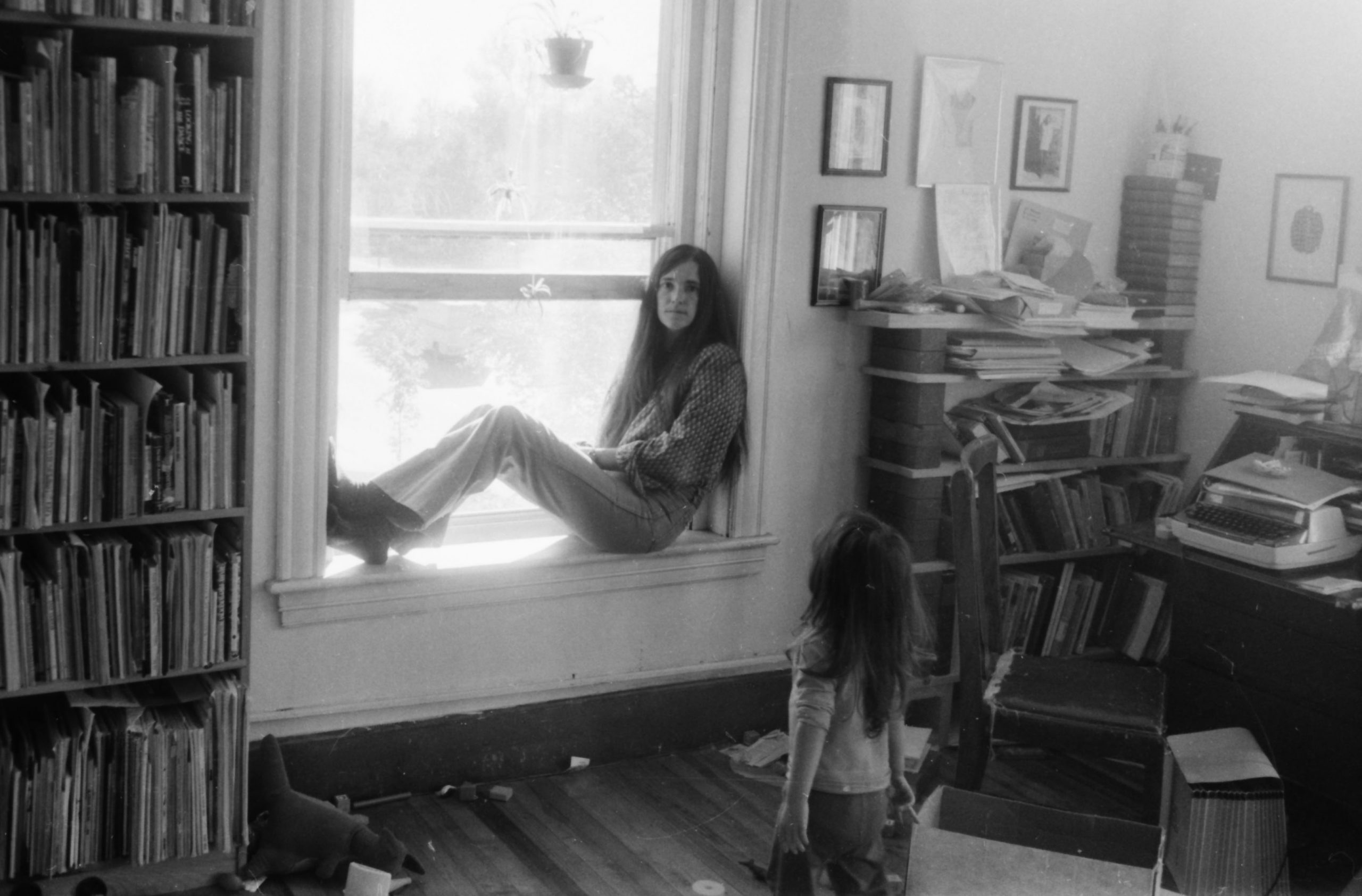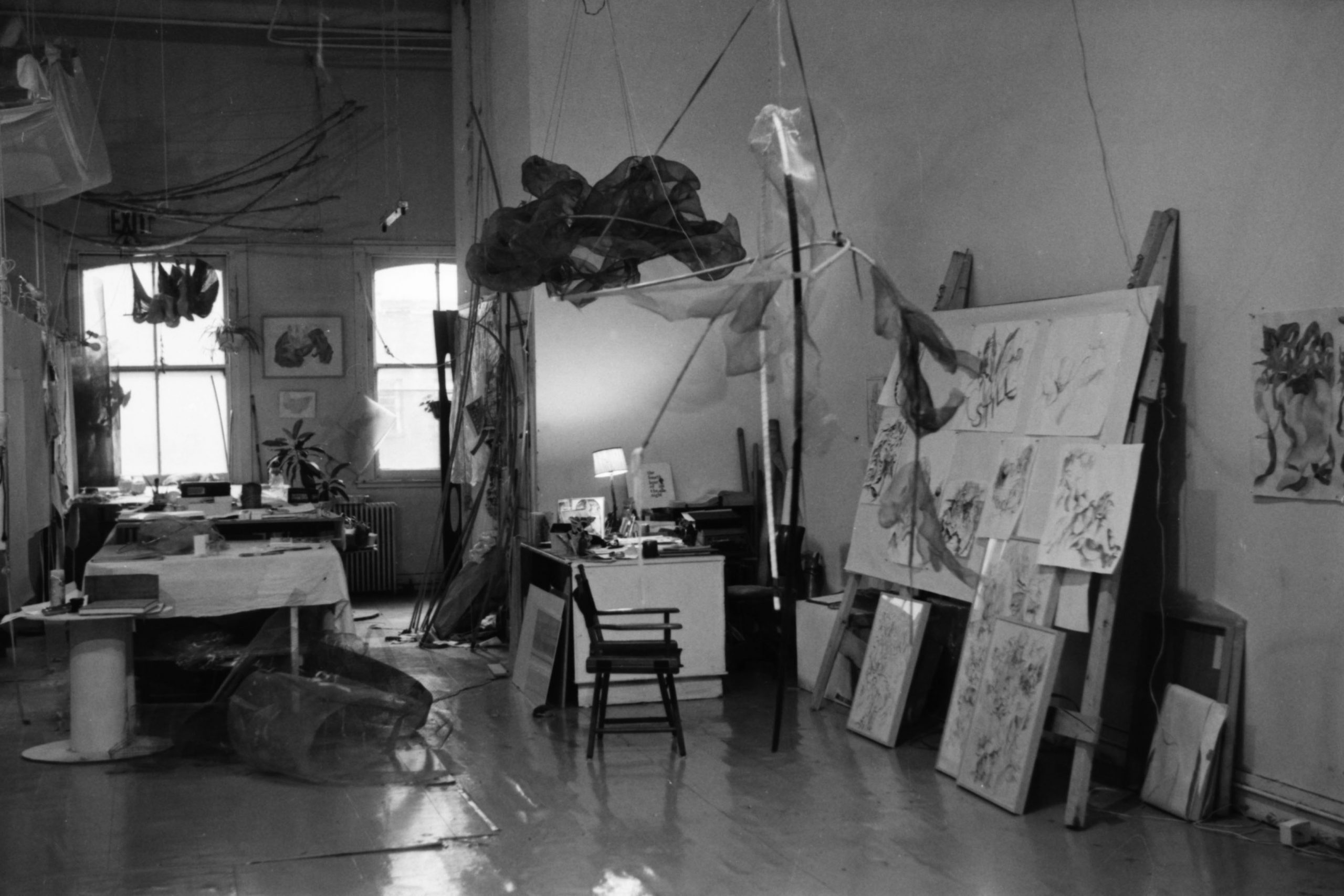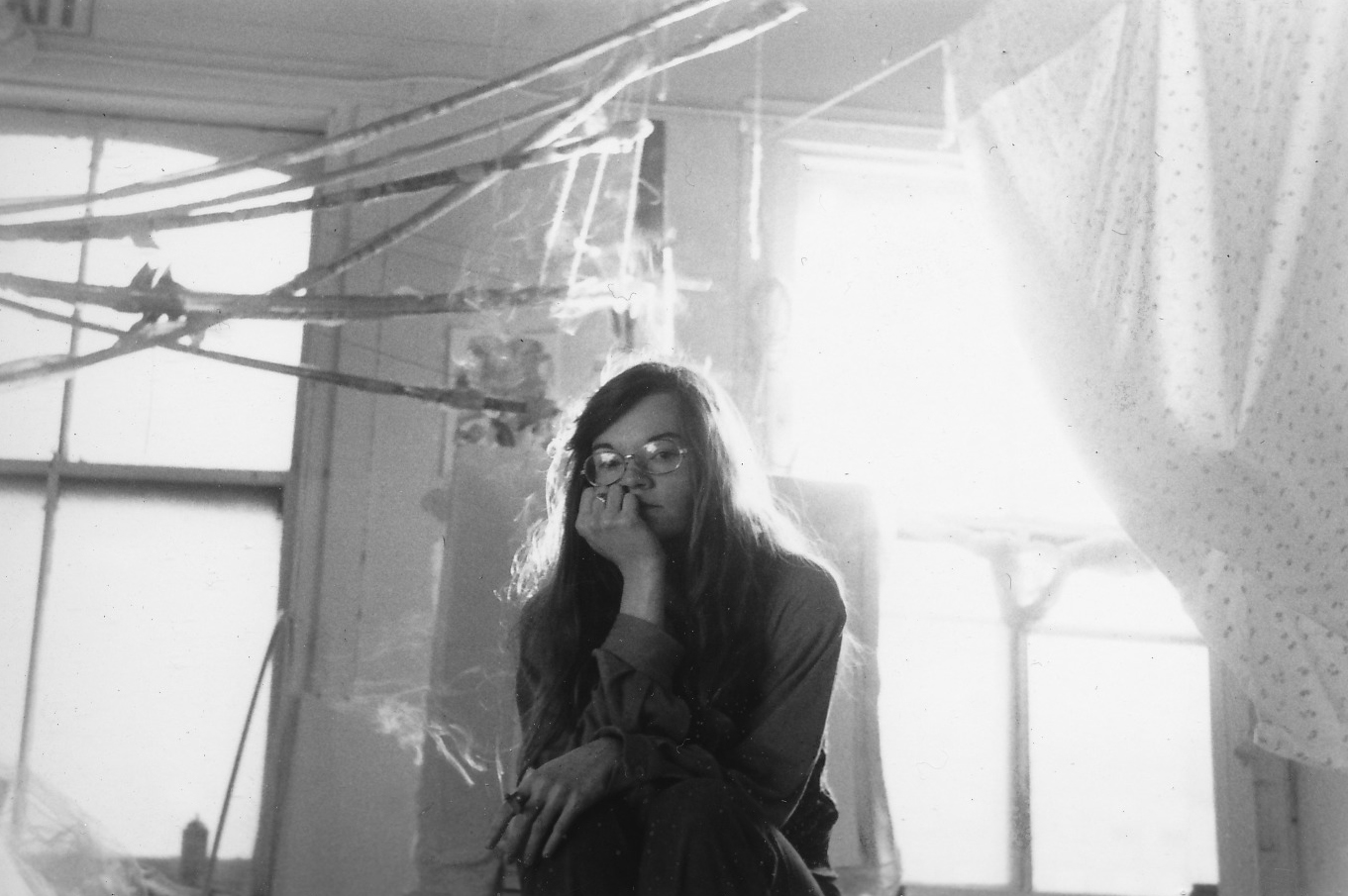Epistolary Sisterhood: On “The Letters of Rosemary and Bernadette Mayer 1976–1980”
By Rose Higham-StaintonOctober 7, 2022
:quality(75)/https%3A%2F%2Fdev.lareviewofbooks.org%2Fwp-content%2Fuploads%2F2022%2F10%2Fthe-letters-of-rosemary-bernadette-mayer-1976-1980-57.jpeg)
The Letters of Rosemary and Bernadette Mayer 1976–1980 by Rosemary Mayer and Bernadette Mayer
In their foreword to the book, the institutional directors of the retrospective’s venues ask, “What kind of audience is a sister?” The collection is framed within the context of Rosemary’s work, while also bringing the sisters’ distinct practices into “closer relation.” It is a relation that extends beyond the familial towards “kinship,” or what Donna Haraway calls “an enduring mutual, obligatory, non-optional, you-can’t-just-cast-that-away-when-it-gets-inconvenient, enduring relatedness that carries consequences.” As each other’s counselors, confidantes, friends, admirers, and critics, the sisters spar and mimic each other, making demands upon the other’s time and efforts: “Write me about my writing, my lazy sister,” begs Bernadette on August 4, 1976.

From within the construct of gender, sisterhood is presented as a reflexive mode. “In truth Rosemary, we are very much the same,” writes Bernadette on December 6, 1976. Rosemary responds, “Maybe we have similarities in some part of our nervous systems, our mental-set-ups or whatever one would call whatever induces particular views of, or sensitivities, to the world.” The refractory and distorted reflections of sisterhood are magnified by epistolary address — a kind of looking outward and inward. This intimate and conspiratorial tone binds the book in “considerable self-watching.” “By now you’re convinced I’m a lunatic, but this is the way I write in my journals. Talking myself in and out of things,” Rosemary writes, slipping through confessionary modes.
During their long correspondence between a loft on Leonard Street in Tribeca and Lenox, Massachusetts (and later, Henniker in New Hampshire), Rosemary was nurturing a visual art practice, attending consciousness-raising group meetings, and living, largely alone, in New York, while Bernadette — closely associated with the Downtown New York poetry scene — had moved to the country with partner Lewis Warsh to raise a burgeoning family, writing poetry at night as the children slept. Over 300 pages, across four chapters, and often in the same breath, Rosemary and Bernadette talk about love and artmaking, money and the psychological imprint of becoming orphans in their youth, interjected with the momentary silences that lack of energy or time afflicts on epistolary address.
Raised in Ridgewood, a disputed neighborhood somewhere between Brooklyn and Queens, Rosemary and Bernadette attended Catholic school. Rosemary would go on to study classics at St. Joseph’s College and the University of Iowa as well as fine art at the School of Visual Arts and the Brooklyn Museum Art School, Bernadette at The New School for Social Research. Their parents and uncle George died within a few years of each other when the sisters were still adolescents, leaving them largely alone. The Letters expresses how tender they still remained from those experiences and how everything that followed was shaped by it: Bernadette’s codependency in relationships, Rosemary’s fear of commitment, and the sisters’ tendency to manically overwork all rise to the surface here, while below the surface the book is haunted by “the problem of being alone.” Bernadette says, “It’s almost impossible for you + me to put ourselves in any situation that creates the chance of loss, without (our) exhibiting masochistic impulses.” Beyond biography, Bernadette and Rosemary were united by feminism, of a kind that has inevitably dated. Rosemary was a cofounder of the significant, if not contentious, A.I.R. Gallery in New York (the first women’s cooperative), but here feminism is firmly situated in their personal circumstances rather than in big-P politics — from Bernadette’s meditations on the intersection of motherhood and labor to Rosemary’s concern at navigating artmaking from within the parameters of her newly coupled life with lover John Boone. Their politics become more explicit towards the end of 1980 when Rosemary breaks off her affair with the critic Edward Fry, for being “a pig at heart,” referring to his chauvinist tendencies.
How to respond critically to letters that are the very fabric of a life? The sisters’ approach to letter writing is as much an expression of their personality, and psychology, as it is an extension of their practices. Rosemary bounds between being broke and depressed in New York City to productive and social and leaves staccato statements hanging in the balance and between: “John had the flu but is recovered. The cats are all insane. One friend was pulled over by her dog. Another fell down the stairs. Both are in the same hospital. Yesterday it snowed. Incapable of writing because I’m writing too much other stuff.” Other times, she asks gallant questions — “How do you love somebody?” — and makes credulous demands — “Write to me, B. M., about love. Polonius-isms right and left,” which is a reference to Polonius in Hamlet, and an ongoing refrain between the two sisters about the risk of obnoxious advice-giving. Bernadette responds pragmatically: “If I could answer the questions you pose in your letter, I would be beyond philosophy.” She is meditative, contextualizing ideas and framing them in quotidian details; she talks about the problem of her codependency with Lewis matter-of-factly, as being “firmly in my own hand, and nobody else’s.”
Beneath the soft marbled paper of the book jacket, Rosemary’s niece Marie Warsh and the historian Gillian Sneed have thoughtfully excavated and compiled letters from this period, transcribed onto the page by Sneed and Farrar Lannon, and interspersed with typewritten or handwritten originals to impress the sisters’ individual styles not just in prose but also in their aesthetic attention. Rosemary’s are composed of fragmentary and fleeting lines, like blown litter, and written by hand in a decorative cursive scrawl that switches over time as she tests out new styles on Bernadette for her current book projects. There is a transience and levity to her letters that mirrors the anti-monumentalism of her visual practice — its ephemeral materials and wispy forms — while Bernadette’s are prosaic and lengthy streams of consciousness, relentless without line breaks and mostly set in the efficient and regimented rows of a typewriter.
Time-based and air-mailed, epistolary writing is both fleeting in nature and immortalized in literature and archives, so that to publish a collection of letters, and hold them down, is a tribute to and against time and a mutual conceit of the Mayers’ practice, from Rosemary’s commemorative and “temporary monuments” made from melting snow and itinerant weather balloons to the endurance test of Bernadette’s book-length, day-long poems and epistolary collections. As orphans, the sisters’ letters made voluble their ambivalent relationship with time — letters bide it and buy it. Their shared concern about time to work — never enough of it — dominates the space and prose of these letters. Here it is expressed by Bernadette in the mechanizations of the typewriter:
(The typewriter makes me feel chatty because it’s so easy and fast to say things since I’m typing at a great speed and also its good therapy for me because since the book is finished I’m dying still to be feeling that I’m writing something, I can’t stand not to be working, I’m inevitable, I mean inveterate worker […])
The act of chronicling was fundamental to Bernadette and Rosemary’s process, but they also employed it as a structural and narrative device. Rosemary’s artist books Passages and Transitions comprise an amalgam of historical narratives and travel diaries compiled and illustrated in her decorative hand. Around this time, she was also translating diaries of painter Jacopo da Pontormo in Pontormo’s Diary, while as a lifelong journaler she would often make carbon copies of excerpts to include in her work.
Journaling was a framework for Bernadette too, most notably in Piece of Cake (1976), a collaborative book in which she and her husband Lewis wrote diary entries on alternating dates, every day for a month. The call and response of letter writing with friends and peers like Bill Berkson and Clark Coolidge formed an extension of her practice and was compiled into collections and published as poetry. During 1979–80, Bernadette was also working on a volume of poetry formulated from her letters to people, titled The Desires of Mothers to Please Others in Letters.

Beyond the chronicle, Rosemary impressed the passing of time through fleeting matter — the way watercolor fades and fabric wears, snow melts and wind settles. By the early to mid-1970s, she was gaining recognition for her voluptuous nonfigurative sculptures shown in the current retrospective Ways of Attaching, which are constructed from lustrous fabric and stretched on or draped from bowing metal frames. She would construct and document works, and sometimes, when she wasn't completely happy with them or to necessitate space and more materials, deconstruct them altogether. Rosemary’s fascination with the baroque, and its Catholicism, rattled against the minimalist aesthetic and white-cube gallery space of the late 1970s and demonstrated another way that she worked with and against time. During this period of correspondence, Rosemary was deep into book work — making artists’ books, trying to publish Pontormo’s Diary, and working on book jackets for Bernadette’s husband Lewis. She was also embarking on a new series of time-based sculptures or “temporary monuments,” consisting of weather balloons and snowmen as public installations in commemoration of loved ones that she’d lost, including their uncle, parents, and dear friend Ree Morton.
In December 1976, Rosemary referred to waged work as “sheer time, empty of my usual thinking,” giving material conditions to time itself. The letters are sheer too, or utterly transparent, confessional, and intensely revealing.

You do not need to know the work of Rosemary and Bernadette Mayer to appreciate this volume and the way it forges a narrative through-line from quotidian patter, personal neurosis, and childhood memories (“I dreamed about Cheese Doodles, remember them?” writes Rosemary) and from the struggles of being women, mothers, and lovers. Rosemary’s initial poise about the breakup with Boone, and her eventual outpouring several letters later, gives form to the delayed shock of it. But knowing the work creates subtext and clues to their artmaking — “I hate to start any new big project in mid-winter,” writes Bernadette in 1977, a comic refrain given that in December of the following year she would write a quotidian epic titled Midwinter Day.
The Letters presents one single and unfabricated dialogue between two voices that occasionally merge or mimic one another, the way humans do in the company of those they love and admire. After quitting cigarettes, Rosemary writes in an uncharacteristically long and elongated syntax akin to Bernadette’s liquid prose. This dialogue is peppered with magical turns of phrase. Chastising Rosemary’s ex-lover Boone, Bernadette writes of “all the soft advantages he’s had.” Of the shopping centers near Lenox, Rosemary says, “It’s all a cove for the enclosed.” These land like an offhand poetics.
By 1977, and midway through their correspondence, form loosens — shifts and splits playfully — and Rosemary refers to her letter of August 17, 1978, as a “journal variety letter,” and halfway through splits it into two columns on the page. On October 14, 1977, Bernadette injects her postscript with a narrative significance and poetic vigor:
Snow forecast tonite.
Our car died today (in a way)
Rosemary heads the right margin of her paper:
Dec 14 [1977]
the day there
is no water
By early 1979, the correspondence has begun to pale — Rosemary is preparing for several shows, and Bernadette is finishing Midwinter Day; by the spring, Bernadette is offered a position teaching at a college in New Hampshire and moves the family there. Rosemary’s letters become more meandering, sometimes languorous, while Bernadette’s are clipped for efficiency. Perhaps it is restlessness rather than the distance that turns each of them into a “derelict correspondent.”
I think about the rare embraces between Bernadette and Rosemary — what it felt like, whether they leaned into one another, held tight or light or not at all. It is one of the few intimacies we cannot surmise through the intensity of this six-year correspondence. Bernadette describes a persistent feeling she has — that “if another person is not in my presence I actually don’t exist,” and underlines this sentence in the letter to Rosemary as if Rosemary might be the other person for whom, and to whom, she must exist. The sisters relentlessly plead with one another to visit, but these reunions are often unsatisfactory, as if reality cannot stand up to the depth and intimacy of their letters. By the closing letter, Bernadette is preparing to move back to New York, rumored to be in the running for director of the Poetry Project at St. Marks Church, and it is then that the letters stop. It is perhaps because of, not despite, the physical distance between them that they were able to forge such intimacy. Is this the mark of great letter writing — an intimacy that cannot be summoned from our own flesh and blood?
By the final throes of their correspondence, Bernadette’s daughters Marie and Sophia dominate the conversation — how the eldest Marie is caring, proudly and protectively, for Sophia, and “every time she does it,” Bernadette writes, “I think of you, of you and me.”
¤
Rose Higham-Stainton writes about visual art, literature, and material cultures. Her work is held in the Women’s Art Library at Goldsmiths College and has been published by The White Review, Art Monthly, MAP Magazine, PIN—UP magazine, The Skirt Chronicles, Ache, Worms Magazine, PASSE-AVANT, Deleuzine, and upcoming in Bricks from the Kiln.
LARB Contributor
Did you know LARB is a reader-supported nonprofit?
LARB publishes daily without a paywall as part of our mission to make rigorous, incisive, and engaging writing on every aspect of literature, culture, and the arts freely accessible to the public. Help us continue this work with your tax-deductible donation today!